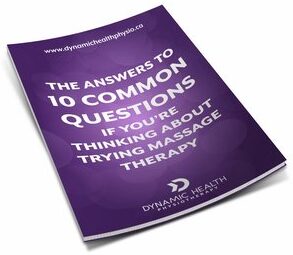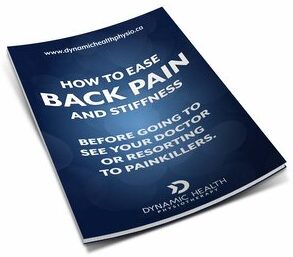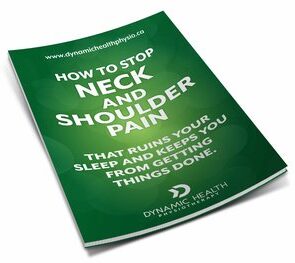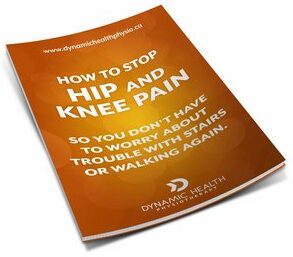- June 26, 2022
BACK PAIN THAT KEEPS COMING BACK – WHY WE GET FLARE-UPS AND EXERCISES TO RELIEVE LOWER BACK PAIN AT HOME
Back Pain That Keeps Coming Back – Why We Get Flare-Ups and Exercises to Relieve Lower Back Pain at Home
Back pain and stiffness can start for many different reasons. But once it sets in, what do we do? Often when you are younger, you can rest for a day or two and be back on your feet in no time.
Over time, though, it often becomes harder and harder to bounce back from the stiff, sore back in the same way you could before.
What causes back pain flare-ups and what can be done to relieve lower back pain, especially at home? Read on to find out!

WHY LOWER BACK PAIN AND BACK PAIN FLARE-UPS HAPPEN.
WHAT CAUSES SCIATICA?
The first possibility that comes to mind when you think of injuring your back is likely lifting something heavy, doing a quick movement that wrenches your back, or maybe a traumatic injury like hurting your back in a car accident. With these possibilities, your back can be fully healthy, or previous back pain is fully resolved, but the stress and strain on the back is so great that it still causes a new injury or recurrence of the old injury.
THE SMALL LITTLE THINGS THAT ADD UP
The most common reason for recurring low back pain is repetitive strain or small amounts of load that happen repeatedly during your regular daily routine that, over time, add up to significant wear and tear on the lower back.
Usually, this type of injury or flare-up comes on slowly and gets worse over time and you may be wracking your brain trying to figure out why it hurts when you haven’t done anything that involves heavy lifting or bending. The truth is that even without an obvious back twisting accident, you can develop severe low back pain from the cumulative effects of doing small repetitive movements, sitting in poor postures, and not taking care of the early aches, pains, and stiffness that can be warning signs for more severe back pain that could be setting in.
THE PREVIOUSLY UNRESOLVED INJURY
The final category is also very common to see in the clinic. While big and small causes of low back pain may have been the final culprit that led to a full-on flare-up, often there is an underlying unresolved previous low back injury that has led to it.
Maybe you’ve had small low back pain episodes that have mostly resolved without treatment. Maybe you’ve had more significant back pain that improved with the help of your physiotherapist or other healthcare provider. Whatever the case, often these previous episodes of back pain get better to the point where we can manage our daily tasks, but they never fully resolve. It could present as stiffness, chronic tension in the muscles, difficulty with certain movements, or weakness and fatigue with activity. If left unresolved, your low back can go from feeling ‘okay’ to flared up without much for added stress or load.
Now that we’ve talked about the types of things that can bring on back pain, it’s important to also mention that there’s lots you can do to help relieve it once it starts. Here are some examples of exercises and stretches that you can try at home when you’re dealing with an episode of lower back pain.
EXERCISES THAT CAN HELP AT HOME
FLEXIBILITY
If your back is feeling tight and sore, a good exercise to try is bringing your knee or knees up toward your chest while laying on your back. This stretches the lower back and hip. It can be held for 30 seconds and repeated two to three times daily, as long as it doesn’t increase your pain.
STRENGTH
A good exercise to try if you aren’t having pain when bending forward is reaching to the floor when you’re in standing. Tuck your chin and reach down as far as you can. Breath out at the lowest point – this will let you get just a little bit further. As you return to standing, move slowly and carefully and keep your chin tucked until you get all the way back up into standing. This movement stretches your lower back as well as the back of your hips and legs. It also helps to strengthen the lower back as you stand back. A reminder with this exercise – it should not be painful!
MOBILITY
The final exercise to use with back pain flare-ups is to stand up and extend your low back while supporting your low back with your hands. People often do this naturally if they’ve been sitting for too long and need to stretch. In this case, using the movement repeatedly can help to mobilize the low back and decrease pain – especially if you have regular pain with bending forward.
WHAT ELSE CAN YOU DO?
It’s important to mention here that these exercises are suggestions that work well when paired with the proper diagnosis. We still recommend that you be assessed by a physiotherapist to make sure you are doing the right movements and exercises to optimize your recovery and limit future flare ups.
If you’d like to learn more about how physiotherapy works and how we can help, you can sign up for one of our free discovery visits here:
If you know you are ready to get started on relieving your lower back pain and you want to make sure it doesn’t keep coming back over and over again, you can book an assessment by calling 472-1565 today.

Have Questions About Massage Therapy

Need some help with your back pain?

Struggling with neck or shoulder pain?
Click the button below to claim your free copy of this neck and shoulder pain tips report!

